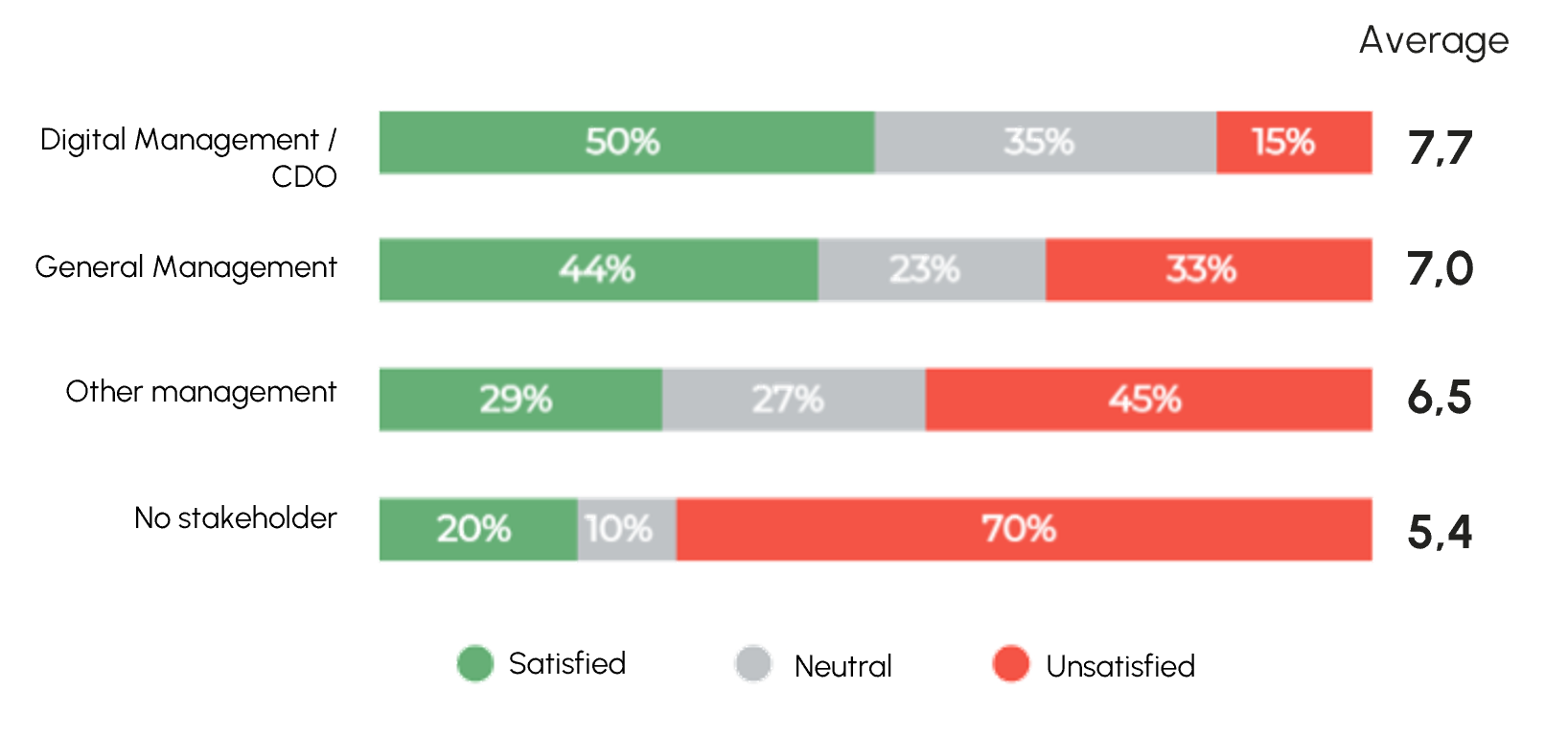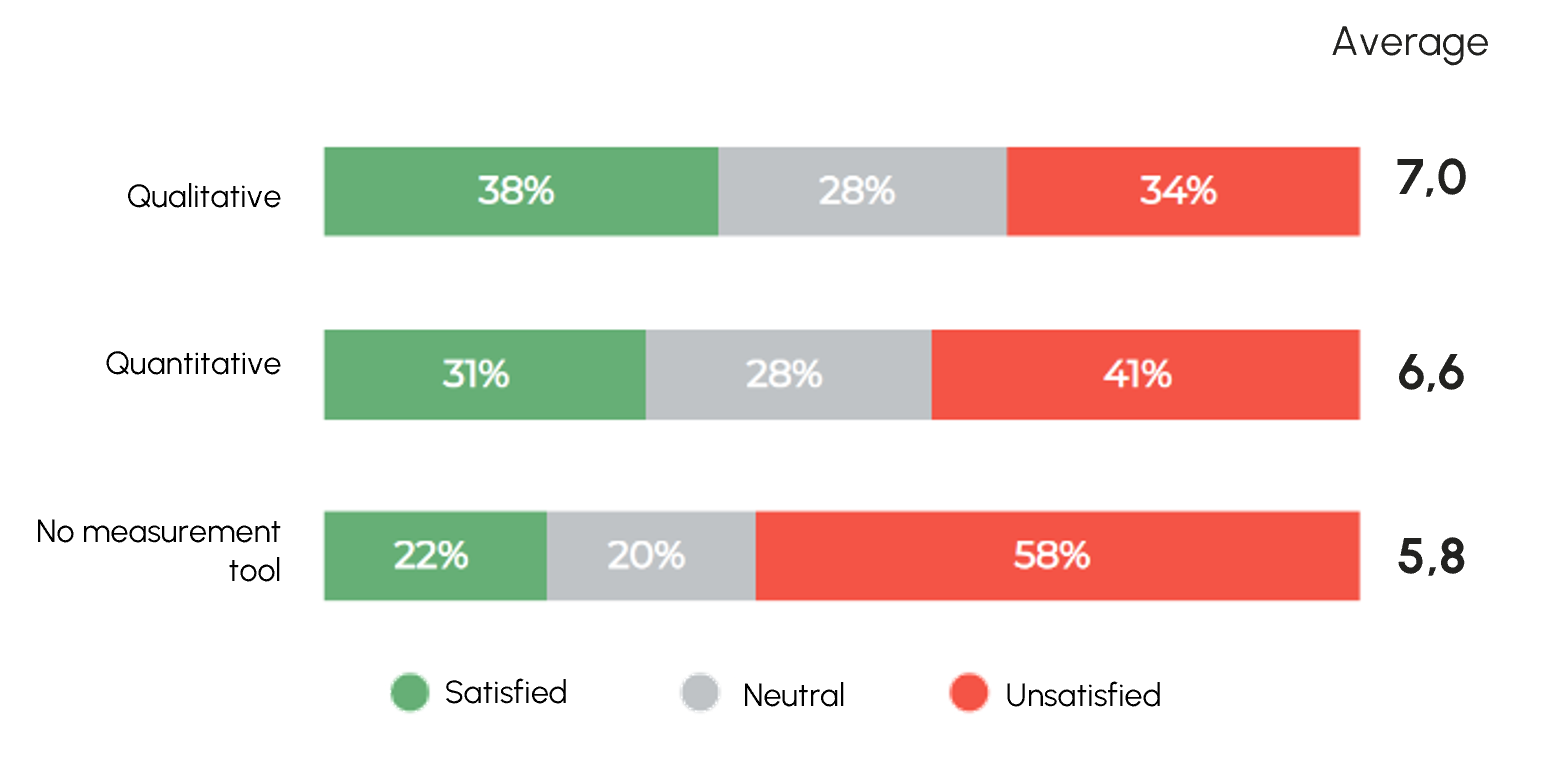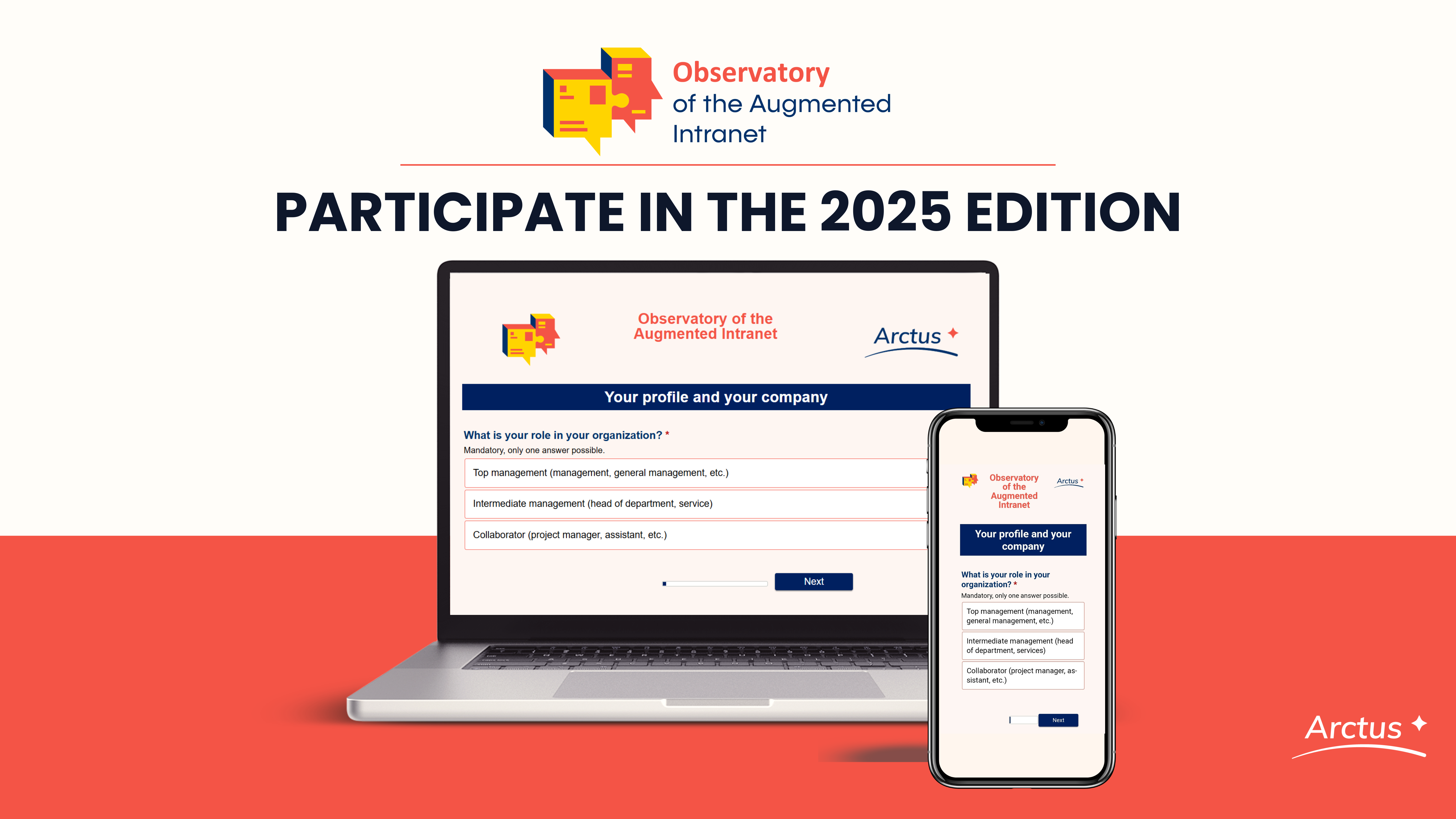INTRANET & ENGAGEMENT LEVERS: FOSTERING GOVERNANCE FOR THE BENEFIT OF USERS!

22 December 2023

The subject of governance applies to all systems, whether they are human, technological, or hybrid. Historically, governance in the realm of intranets has not been significantly invested in, but this trend has been reversing since the COVID crisis, as shown by the 2023 edition of the intranet observatory.
In the previous series of articles, we saw that several levers, such as editorial formats and the choice of technical solution influence the level of user satisfaction with the intranet.
In this article, we will discuss the governance of the intranet: what is the maturity level of these systems in organizations? To what extent can governance impact the experience of intranet users?
Toward a Mature Governance of the Intranet
The governance of an intranet involves processes, bodies, and stakeholders to effectively manage the system within an organization. Effective governance ensures clear direction, coordination of efforts, and coherent decision-making. Let's explore where organizations stand in 2023 on the various aspects of governance:
- Steering Committees are Becoming Standardized
Governance bodies or structured committees aim to ensure that all or part of the system operates optimally. They can, if necessary, make decisions within their respective areas of expertise.
Here is a typical committee structure designed to ensure the effectiveness of the intranet (it must, of course, be adapted to your organization):
- The strategic committee to decide on the directions and budget to be allocated to the intranet
- The editorial committee serves to validate the logic of content publication.
- The technical committee, often led by the IT department, brings together expert stakeholders of the technical solution or the deployed CMS (Content Management System).
If, in 2019, only 56% of organizations had established at least one steering body for their intranet, the Intranet Observatory reveals that this figure has risen to 76% in 2023, evidence of the growing maturity of organizations in this area.
- Assigning Clear Roles and Responsibilities, a Necessity
The previously mentioned bodies exist due to professionals with well-defined roles. The main ones are: the intranet manager, the contributor, and the administrator. These three essential roles can be supplemented by others depending on the complexity of the organization.
To ensure that everyone has the appropriate level of knowledge, it's important to focus on their training. This becomes even more crucial with the rise of SaaS (Software as a Service) solutions and technologies that are constantly evolving.

Regarding the key players of the intranet, they participate in strategic decisions related to the intranet. These are primarily the communication department, the IT department, and the executive management.
Generally, organizations seem to have understood the importance of involving key players in the management of the intranet. Indeed, only 3% of respondents report the absence of a key actor, down from 20% in 2019. Moreover, each company reports an average of more than 2 key actors, indicating that the intranet is a well-invested platform.
- Training: A Wide Range of Tools Available
To keep contributors and users at the right level, the creation of educational content (tutorials, instructional videos…) in suitable formats (videos, quizzes…) becomes crucial. These training contents are ideally integrated into interactive platforms, such as the network of contributors.
In a hybrid work environment, support methods are adapting, becoming more flexible and collaborative. Statistics show that remote training and exchange communities (respectively 54% and 46%) are more prevalent than in-person training sessions (35%).
- KPIs and Performance Evaluation: In a Phase of Expansion
Compared to previous studies, organizations are placing increasing emphasis on measuring performance and sharing this data with managers (but still little to contributors).
In organizations that measure the performance of their intranet, quantitative evaluation (log analysis, online survey...) still predominates over qualitative evaluation (with 66% and 46% respectively).
As it becomes easier to obtain quantifiable data, monitoring the consumption of content and user behavior with applications is becoming more refined. This is a growing trend to watch in the coming years!
An Involved Leadership, Dedicated Management, and Evaluated Performance: The Winning Combination
The current situation is thus established: despite room for improvement, the trend is towards the progression of intranet governance modalities in organizations. But then, what is the connection between the maturity of governance and user satisfaction?
To answer this question, we have cross-referenced the responses relating to governance with a question that was introduced in the 2023 edition of the Observatory "In your opinion, what is the average level of satisfaction among users of your organization's intranet?". Respondents were asked to rate themselves on a scale of 1 to 10 (1 being very dissatisfied and 10 very satisfied with the intranet).* The results give us an indication of which configurations are most conducive to user satisfaction.
- Decision-Making Bodies to Set the Course

The results clearly show that organizations with an intranet managed by a committee, of any kind, report significantly higher user satisfaction. Conversely, the absence of a decision-making body is associated with greater user dissatisfaction (62% dissatisfied).
Of all the committes in place, the strategic steering committee is linked to the highest level of satisfaction (43% satisfied), yet it is the body least present in organizations. In fact, only 26% of organizations have a strategic steering committee, while 42% have an editorial committee.
Previously less implemented (present in only 13% of companies in 2019), editorial governance is increasingly taking a significant role – particularly since COVID – and even leads the governance mechanisms deployed in 2023. This trend of governance structuring around content is expected to strengthen in the coming years, as executive bodies have identified the editorial committee as a driver of corporate culture. It's also important to note that the landscape of contribution is evolving towards the decentralization of content creation.

Another conclusive result: respondents from organizations where the digital management or Chief Digital Officer (CDO) are key players in intranet governance report higher user satisfaction (even more so than in organizations where the executive management is a key actor: 50% versus 44% satisfied!).
Management by a key actor proves to be a guarantee of engagement for users because their needs are better taken into account. This is particularly true when the management actor is able to make cross-functional decisions.
These numerical results prove that clear leadership and effective communication are real levers for enhancing the engagement of the end user.
- Evaluating Performance to Align with User Needs

The correlation of data on the performance measurement of the intranet with user satisfaction indicates that the existence of measurement tools, whatever they may be, leads to more satisfaction. Without tools, it's difficult to evaluate and improve the effectiveness of the intranet. As a result, the intranet does not evolve and becomes unsuitable for the needs of the users.
Finally, the implementation of qualitative evaluations (interviews, focus groups, etc.) is what generates the most relevant services for users.
conclusion
The governance of intranets translates the level of interest and commitment of organizations towards their employees. Thus, the more formalized the governance mechanisms are, the more satisfied users tend to be with the intranet.
Do you want to deploy the usage of your intranet and support its sustainable adoption? Arctus is here to assist you in defining the new organization to implement.
*Attention: Our approach of cross-referencing different questions with the one about user satisfaction does not demonstrate causality but rather correlation effects. It is not a predictive model and does not guarantee that implementing a specific initiative, feature, or rule will ensure satisfaction. The outcome remains inherent to each organization.
Listening to your employees and providing personalized responses is therefore essential. Contact us for that purpose!


